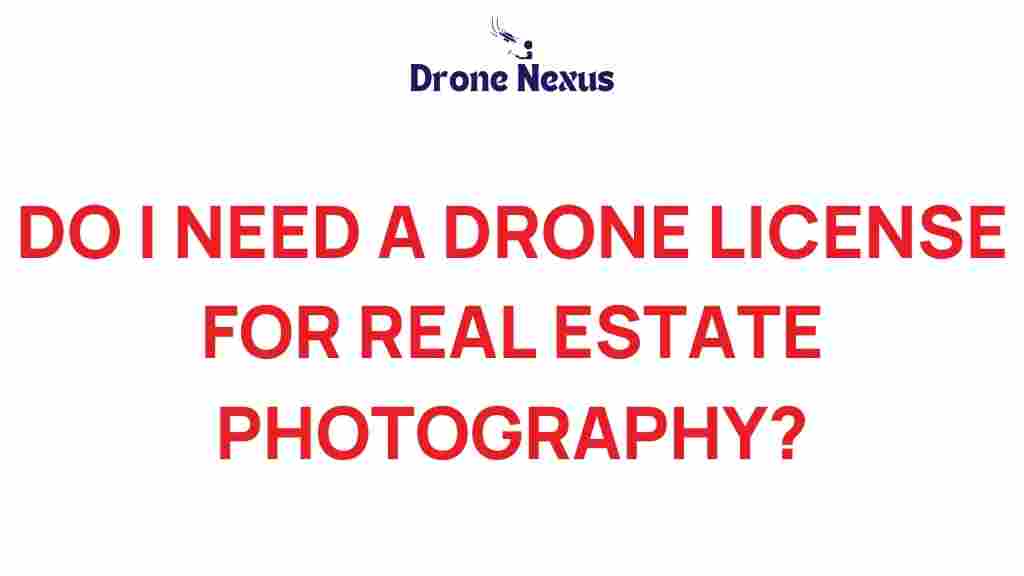Do You Really Need a Drone License for Real Estate Photography?
In the ever-evolving landscape of real estate marketing, aerial photography has become a game-changer. Drones offer a unique perspective that can make property listings stand out. However, as the popularity of drones rises, so does the question: do you really need a drone license for real estate photography? In this article, we will explore the necessity of obtaining a drone license, the regulations surrounding it, and how it impacts your real estate photography business.
Understanding Drone Regulations
Before diving into the specifics of a drone license, it’s crucial to understand the regulatory environment surrounding drone usage. In the United States, the Federal Aviation Administration (FAA) governs all drone operations. Here are the key points you need to know:
- Commercial Use: If you plan to use a drone for commercial purposes, such as real estate photography, you will need to comply with FAA regulations.
- Part 107 Certification: Under FAA regulations, commercial drone operators must obtain a Part 107 certification, which is commonly referred to as a drone license.
- Recreational Use: If you’re flying a drone purely for recreational purposes, you may not need a drone license; however, you still must follow specific guidelines.
Why You Need a Drone License for Real Estate Photography
Here are several reasons why obtaining a drone license is essential for real estate photography:
- Legal Compliance: Operating a drone for commercial use without a license can result in hefty fines and legal repercussions.
- Insurance Coverage: Many insurance providers require commercial drone operators to have a drone license to qualify for coverage.
- Professional Credibility: Having a drone license adds to your professional credibility and can attract more clients.
Steps to Obtain a Drone License
Getting your drone license may seem daunting, but the process is straightforward when broken down into manageable steps. Here’s how to obtain your Part 107 certification:
Step 1: Study the Rules and Regulations
Familiarize yourself with the FAA’s Part 107 rules, which cover:
- Airspace classification
- Flight restrictions
- Preflight inspection requirements
- Emergency procedures
Step 2: Prepare for the Knowledge Test
To obtain your drone license, you’ll need to pass a knowledge test. Here are some resources to help you prepare:
- Online Courses: Consider enrolling in an online course specifically designed for the Part 107 exam.
- Practice Tests: Use practice tests to gauge your knowledge and identify areas for improvement.
Step 3: Schedule Your Test
Once you feel prepared, schedule your knowledge test through an FAA-approved testing center. The test consists of 60 multiple-choice questions, and you will need to score at least 70% to pass.
Step 4: Complete an Application
After passing the test, you’ll need to complete an application through the FAA’s Integrated Airman Certification and Rating Application (IACRA) system.
Step 5: Receive Your Drone License
After your application is processed and you receive your temporary certificate, your permanent drone license will be mailed to you. The entire process can take several weeks, so plan accordingly.
Common Troubleshooting Tips
Even after obtaining your drone license, you may encounter challenges while flying drones for real estate photography. Here are some common troubleshooting tips:
Understanding Airspace Restrictions
Before flying, always check the airspace classification of the location where you plan to shoot. Use apps like SkyVector to determine if you need permission or if there are any no-fly zones.
Equipment Malfunction
If your drone malfunctions during a shoot, follow these steps:
- Stay calm and try to regain control.
- Ensure your drone is updated with the latest firmware.
- Conduct preflight checks regularly to minimize the risk of equipment failure.
Weather Conditions
Always check the weather before a shoot. High winds, rain, or snow can affect drone performance. If conditions are not favorable, postpone your shoot for safety reasons.
Benefits of Using Drones in Real Estate Photography
Now that you understand the importance of obtaining a drone license, let’s explore some of the benefits of using drones in real estate photography:
- Unique Perspectives: Drones can capture aerial shots that showcase properties in ways traditional photography cannot.
- Enhanced Marketing: Listings with drone footage tend to attract more views and can lead to quicker sales.
- Cost-Effective: Once you invest in the drone and obtain your license, the ongoing costs for aerial shots can be lower compared to hiring professional photographers.
Conclusion
In conclusion, if you’re serious about real estate photography and want to use a drone, obtaining a drone license is not just necessary; it’s essential for legal compliance, professional credibility, and ensuring safety. By following the outlined steps, you can navigate the licensing process and begin capturing stunning aerial shots that elevate your real estate listings.
For more information about drone regulations and updates, visit the FAA’s official website.
Whether you’re a seasoned photographer or just starting, integrating drone photography into your services can set you apart in a competitive market. Start your journey today and watch your real estate photography business soar!
This article is in the category Applications and created by DroneNexus Team
